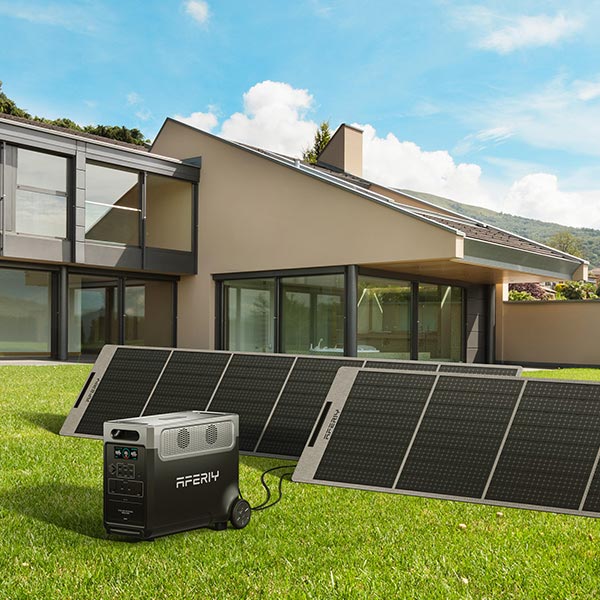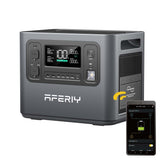How to Prepare for Floods & Power Outages: A Quick Guide
Natural disasters can strike unexpectedly, underscoring the importance of preparation. Focusing on floods and power outages is paramount due to their wide-ranging impact on daily life and safety.
Understanding Floods

Floods, as a natural disaster, can have devastating consequences. They occur when an area experiences an excessive influx of water, often overwhelming the local drainage systems. Causes range from heavy rainfall to dam failures, and floods come in various forms, including flash floods and river floods. Being aware of the flood risk in your region and understanding the different types can help you make informed decisions when preparing for potential flooding.
Understanding Power Outages

Power outages are disruptions in the supply of electricity to homes, businesses, and public facilities. These can be caused by a multitude of factors, including severe weather, equipment failures, or maintenance issues. The impact of power outages on daily life can be significant, affecting communication, food storage, medical equipment, and more. Understanding why and how power outages occur will enable you to plan and equip yourself better for these instances.
Preparing for Floods
Creating an emergency plan involves identifying evacuation routes, setting up communication strategies, and assembling emergency kits. Safeguarding your home entails the installation of flood barriers, elevating utilities, and clearing drains. Understanding flood insurance options provides financial security.
As climate patterns continue to shift, the risk of floods has increased in many areas. Being well-prepared can make a world of difference when facing this formidable force of nature. Here's how to effectively prepare for potential flooding:
Creating an Emergency Plan
-
Identifying Evacuation Routes: Know the safest routes to higher ground or designated shelters in case evacuation becomes necessary.
-
Establishing a Communication Plan: Keep important contacts handy, and designate a meeting point for family members in case you're separated.
- Assembling an Emergency Kit: Pack essential items like water, non-perishable food, first aid supplies, flashlights, batteries, and important documents.
Safeguarding Your Home
-
Installing Flood Barriers or Sandbags: If your area is prone to flooding, consider installing barriers or sandbags around vulnerable entry points to keep water out.
-
Elevating Critical Utilities and Appliances: Raise electrical panels, heating systems, and appliances above potential flood levels to minimize damage.
- Clearing Gutters and Drains: Regularly clean gutters, drains, and downspouts to prevent blockages that could exacerbate flooding.
Understanding Flood Insurance
-
Evaluating Your Insurance Coverage: Review your homeowner's insurance policy to understand what flood-related damages it covers and what it doesn't.
- Considering Flood Insurance Options: If you're in a flood-prone area, explore the National Flood Insurance Program (NFIP) and private insurance options to ensure comprehensive coverage.
By implementing these proactive measures, you're enhancing your ability to withstand and manage the effects of a flood. Remember, the key lies in preparation and staying informed. Your safety and the safety of your loved ones are paramount, and by taking these steps, you're taking a significant stride toward a safer future.
Preparing for Power Outages

While anticipating power outages is challenging, being proactive can mitigate their impact. Here's how to be well-prepared:
Stocking Essential Supplies
-
Non-perishable Food and Water: Maintain a supply of canned food, energy bars, and bottled water to sustain you and your family during outages.
-
Battery-Powered Lights and Flashlights: Having a stash of batteries and reliable flashlights is crucial for maintaining visibility, especially during nighttime.
- Portable Chargers for Electronic Devices: Keep power banks handy to ensure your communication devices remain functional.
Utilizing Alternative Power Sources
-
Generators and Inverters: Invest in a generator or inverter that suits your needs. These devices can power essential appliances and charge devices during extended outages.
-
Solar-Powered Devices: Solar panels and solar chargers can be lifesavers during extended power losses. They harness sunlight to provide sustainable energy.
- Battery Backup Systems: Battery backup systems seamlessly kick in when the main power goes out, offering temporary relief until electricity is restored.
Protecting Electronics and Appliances
-
Surge Protectors and UPS Devices: Install surge protectors to shield electronics from sudden voltage spikes. Uninterruptible Power Supply (UPS) devices offer extra minutes of power to safely shut down computers and other sensitive equipment.
-
Unplugging Sensitive Equipment: To prevent damage from power surges when power is restored, unplug computers, televisions, and other electronics during outages.
- Properly Shutting Down Electronics: If the power goes out, shut down electronics and appliances properly to prevent data loss or potential damage.
While power outages can disrupt daily life, strategic planning can ease the inconvenience. By having essential supplies, alternative power sources, and protective measures in place, you can weather power losses with resilience and adaptability. Remember, being prepared enhances your safety and comfort during challenging times.
During a Flood and Power Outage

Staying informed through news updates and official instructions is vital. Personal safety involves evacuation if necessary and avoiding hazardous conditions. Minimizing property damage means moving valuables, disconnecting electrical devices, and documenting for insurance.
After a Flood and Power Outage

Surviving a flood or power outage is only half the battle; the aftermath requires careful assessment and action. Here's how to navigate the challenges that follow:
Surviving a flood or power outage is only half the battle; the aftermath requires careful assessment and action. Here's how to navigate the challenges that follow:
Assessing the Damage
-
Checking for Structural Damage: Inspect your property for any structural damage caused by the flood. Be cautious when re-entering your home and assess the safety of the surroundings.
-
Evaluating Electrical Systems: If your home has been flooded, have a professional inspect your electrical systems to ensure they're safe before restoring power.
- Reporting Flood Damage: Notify local authorities and your insurance company about any flood-related damage to begin the claims process.
- Restoring Power and Repairing Damage: If power was shut off during the flood, consult a professional electrician to safely restore power. Address any electrical issues promptly.
Restoring and Cleaning Up
-
Calling Professionals for Electrical Repairs: Leave electrical repairs to qualified experts to prevent potential hazards.
-
Cleaning Up After a Flood: Thoroughly clean and disinfect your property after a flood. Remove contaminated materials and ensure proper ventilation to prevent mold growth.
- Reflecting and Learning: Take the time to reflect on the experience. What worked well? What could be improved for next time? Learning from the situation can help you be better prepared for the future.
The period after a flood or power outage requires patience and careful planning. It's a time to be thorough in your assessments and cautious in your actions. By following these steps and seeking professional assistance where necessary, you can gradually restore your life and property back to normalcy. Remember, while these events can be challenging, your resilience and preparedness will help you overcome the obstacles they present.
Wrap Up
In a world where unpredictability is becoming the norm, preparing for power outages becomes an essential aspect of overall disaster readiness. By fortifying your understanding and approach, you empower yourself to navigate these challenging situations effectively.
Remember, while power outages can disrupt routines and conveniences, they don't have to compromise your safety or well-being. By stocking up on supplies, exploring alternative power solutions, and safeguarding your electronics, you're taking proactive steps towards maintaining a sense of normalcy even in the face of disruptions.
Ultimately, the key to successfully weathering power outages lies in preparedness. Equip yourself with knowledge, tools, and a resilient mindset. Whether you're facing a short outage or an extended disruption, your readiness will make all the difference. Stay informed, stay equipped, and stay safe.











Leave a comment
Please note, comments need to be approved before they are published.